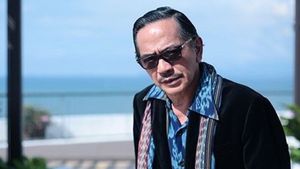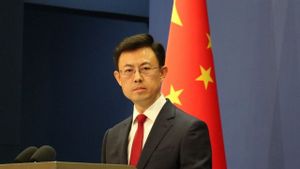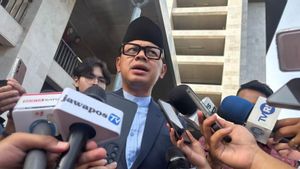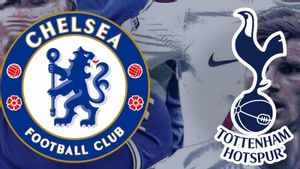JAKARTA - The name of Apple's founder, Steve Jobs, is hailed as one of the greatest technology innovators. It's natural. Because, Jobs managed to revolutionize six industries: personal computers, animated films, music, cell phones, tablet computers, to digital publishing. Apart from being a perfectionist, Jobs actually messed up a lot. However, it was precisely because of that failure that Jobs learned a lot and eventually became one of the iconic figures of this century's technology.
It is told in the biography of Steve Jobs written by Walter Isaacson (2011), Jobs's biological mother is Joanne Schieble who comes from a family of German descent in rural Wisconsin. Meanwhile, his father, Abdulfattah Jandali is a Muslim teaching assistant from Syria.
At 23 years old, Joanne became pregnant. However, initially they decided not to get married. Joanne's father did not want to admit that he was a son if he married Abdulfatah. In early 1955, she went to San Francisco, where she was cared for by a doctor who accommodated unmarried mothers and delivered their babies. They then arranged for the adoption behind closed doors.
Long story short, the baby born to Joanne was adopted by an old auto mechanic named Paul Jobs and his wife Clara Jobs. The baby, named Steven Paul Jobs or later known as Steve Jobs, was born today February 24, 65 years ago, in San Francisco.
Jobs received his basic education at Monta Loma Elementary School. Then, in ninth grade he entered Homestead High School in Cupertino, California. That's when Jobs started to like electronics. "I'm interested in math, science, and electronics," said Jobs written Isaacson.
His knowledge of electronics grew when he was invited by his engineer neighbor Larry Lang to a meeting of the Hewlett-Packard Explorer's Club - the meeting place for the engineers of the largest technology company at that time, HP. There, Jobs was also later hired and worked with Steve Wozniak - who would later become an important partner of Steve Jobs in founding Apple - as a summer employee.
In 1972, Jobs graduated from high school and enrolled at Reed College in Portland, Oregon. Even though he left in the second semester, he continued some of his classes at Reed, such as calligraphy classes.
On April 1, 1976, Jobs and Wozniak, along with another colleague, Roy Wayne, who was also an engineer who had founded the company, entered into a cooperation agreement to set up a company: Apple. The share distribution is clear. Jobs and Wozniak each got a 45 percent stake, while Wayne got a 10 percent stake.
The company then succeeded in creating a computer that used the Apple I keyboard for the first time. After successfully selling the unit to a distributor company, Apple then made developments that eventually sold complete computer equipment. The product became known as the Apple II.
The name Jobs became increasingly famous after his company launched a Macintosh product. The product is amazing because it has succeeded in developing an operating system that is very easy to use (easy-to-use programming) . It looks like a software application that can process words, diagrams and spreadsheets . The software is more or less like the Office programs on the Microsoft operating system.

Stumbling block
Jobs success did not escape from obstacles. He failed several times. Behind the success of the Macintosh, previously there was an Apple product that failed, namely Lisa. Then there are also Apple III products, Macintosh TVs and Powermac g4 cube.
Harvard Business thinks Steve Jobs may be very good at understanding how vector technology evolves. "But he messed up a lot too."
The lesson to be learned from the failure of these dead products is that people will quickly forget as long as you place the "bigger bet" in a big way. This means that people forget Jobs's previous failures, because the failure was covered by the success of Jobs in spawning the iPod, iPhone and iPad.
In addition, in the course of his career, Steve Jobs also made fatal mistakes in his life. An example is when Jobs recruited former Pepsi Boss John Sculley. Sculley is the preisden director of Pepsi-Cola, which is owned by the soft drink company PepsiCo.
Jobs, although known to be ambitious, knows that he is not ready to run the company alone. While Apple president director Mike Markkula approved Jobs's idea of recruiting new people. Through Jobs's famous "do you want to sell sugar water for the rest of your life? Or do you want to come with me to change the world?" the dipper was welcomed. Sculley joined in.
After two years as chairman of Apple, Sculley apparently organized members of the board of commissioners to fire Jobs. It happened. Jobs himself should have realized that hiring Sculley was a big mistake.
Rise of Jobs
A few years after Jobs was sacked, Apple was able to run casually with a large profit margin thanks to its temporary dominance in the desktop market. Sculley was apparently unable to realize Jobs's dream of revolutionizing the world of technology so that it could be used by many people in the world.
Jobs was sick of it. He was annoyed that Apple's market share continued to decline in the early 1990s. "Sculley destroyed Apple by bringing in perverse people and values," annoyed Jobs.
In the Christmas holidays of 1995, Jobs was invited by his partner, Larry Ellison, Director of Oracle to take back Apple, and returned Jobs as head of the company. Ellison said he could raise $ 3 billion to make the idea a reality.
Apple's valuation continues to decline. The leadership of Apple was then replaced several times. At that time the CEO position was held by Gil Amelio. After he was elected chairman of Apple's board of directors, Jobs came to see him. He wanted Amelio to help him return to Apple as CEO.
"There is only one person who can straighten our company," said Jobs. According to him, the Macintosh Era has passed, Jobs argued that he thought it was time for Apple to create new, more innovative things.

Since then, Apple has given birth to new breakthroughs in the world of technology. Among them are iPods, iPhones and iPads.
On October 5, 2011, Steve Jobs died in California at the age of 56, seven years after being diagnosed with pancreatic cancer. At the time of his death, he was widely recognized as a visionary, pioneer and genius in business, innovation and product design, and the man who changed the face of the modern world, revolutionizing six industries. His death was widely received and considered a big loss to the world by fans around the world.
The English, Chinese, Japanese, Arabic, and French versions are automatically generated by the AI. So there may still be inaccuracies in translating, please always see Indonesian as our main language. (system supported by DigitalSiber.id)













